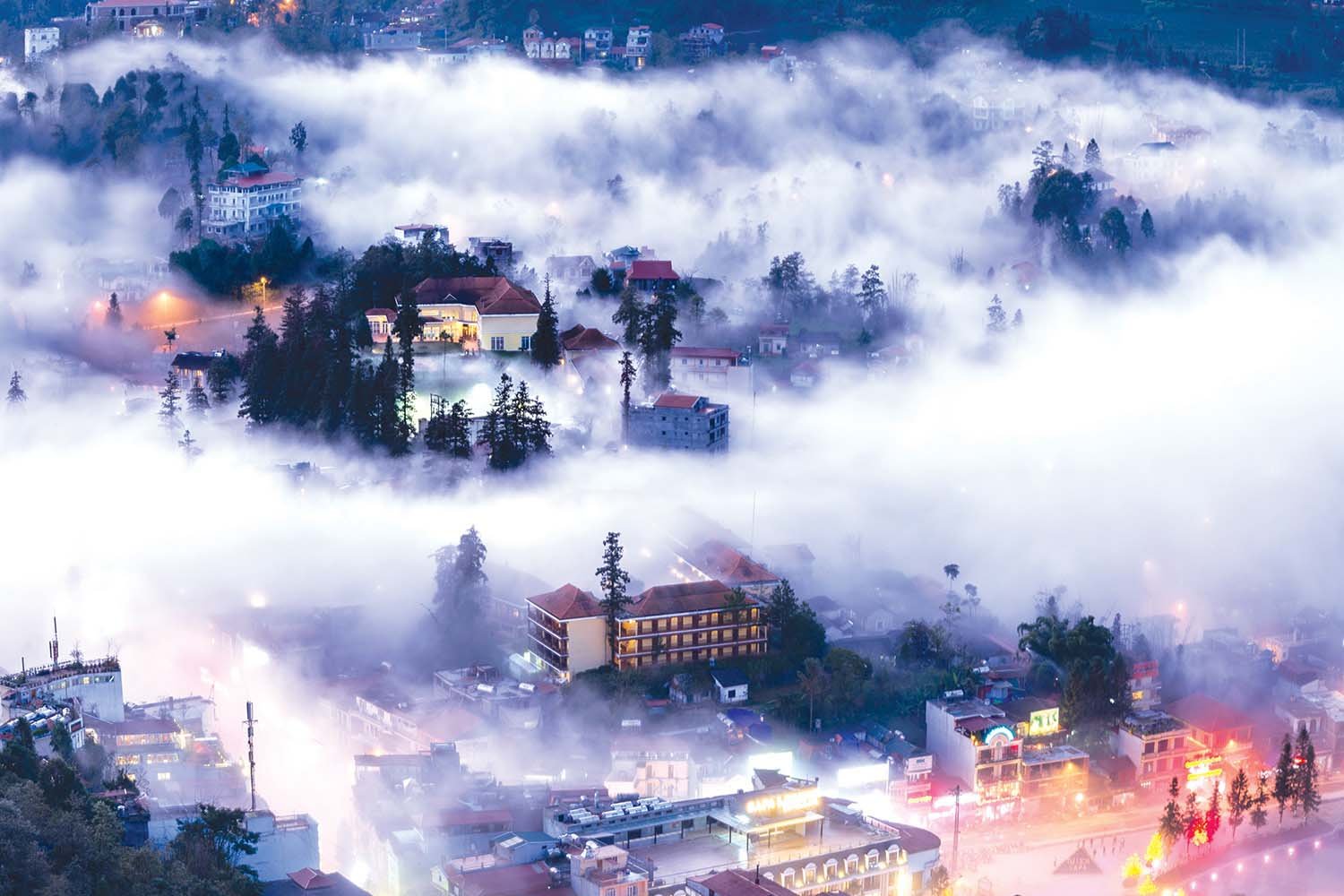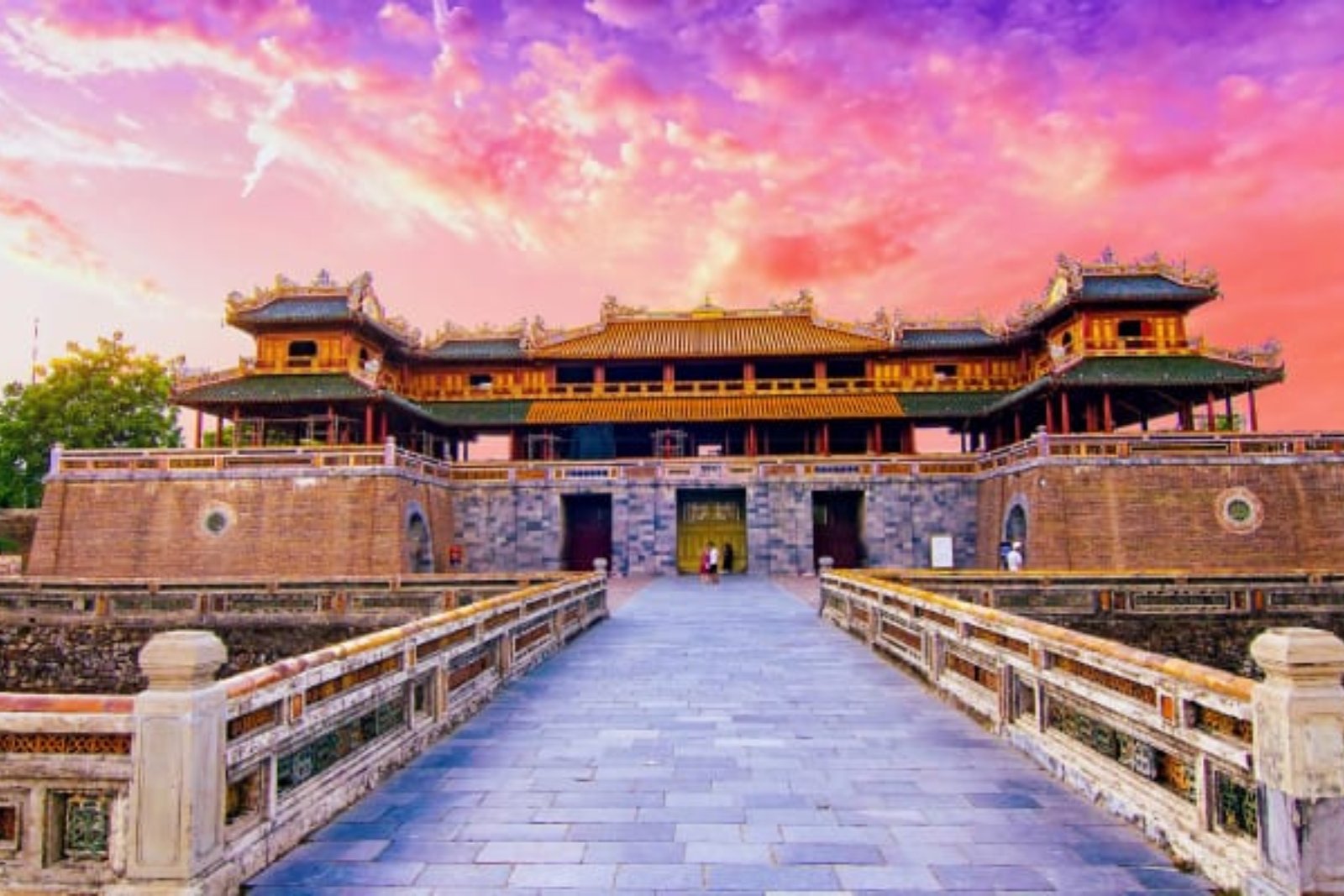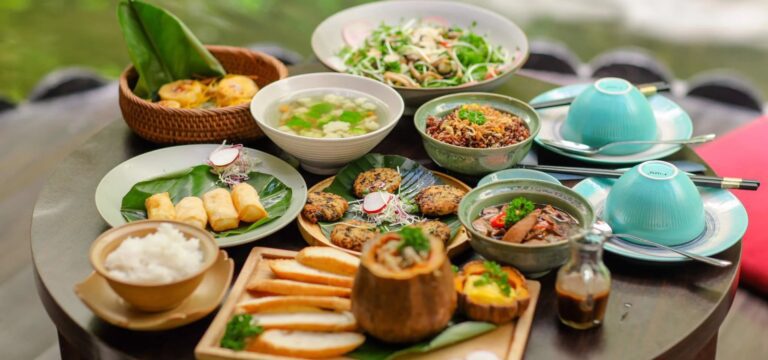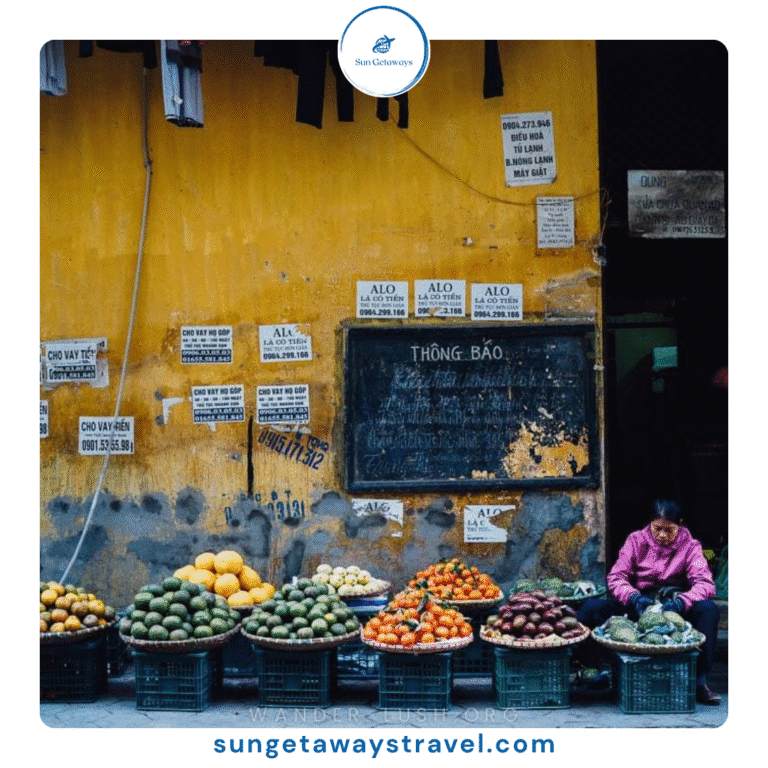Hue City Walls: Discover the Ancient Capital’s Historic Fortifications
 ngocdiem
ngocdiem The Hue city walls are a symbol of ancient Hue, reflecting the rich heritage of Vietnam’s former imperial capital. Built to protect the city, these fortifications not only showcase the strength of the Nguyen dynasty but also blend beautifully with Hue’s landscape. Moreover, they are more than just architecture; instead, the Hue fortifications tell stories of resilience and power. Today, they still stand as a reminder of the city’s glorious past. As a result, they invite visitors to explore this UNESCO World Heritage Site and step back in time.
1. History and Architecture of Hue City Walls
The Hue city walls were constructed during the early 19th century under the reign of Emperor Gia Long, the founder of the Nguyen dynasty. Inspired by the Vauban-style military architecture from France, the fortifications were meticulously designed to protect the imperial capital from external threats while showcasing the strength and grandeur of the Nguyen Empire.
Built primarily from stone, bricks, and compacted soil, these Hue fortifications reflect a blend of traditional Vietnamese craftsmanship and advanced military engineering. The walls were reinforced with multiple layers, creating a solid defense system that could withstand attacks from both natural disasters and enemy forces. Surrounding the main structure is a network of moats, bastions, and gates that provided additional protection for the imperial city.
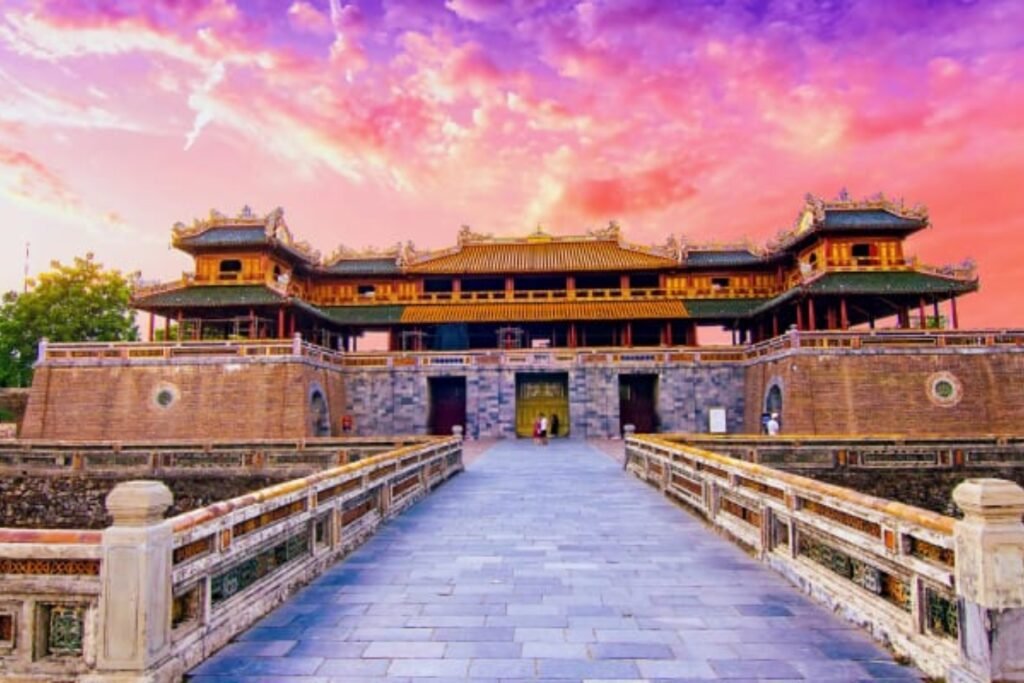

One of the unique features of the ancient Hue city walls is their star-shaped layout, a rare design element in Southeast Asia at the time. The walls, stretching over 10 kilometers, encircle the entire citadel and are punctuated by 10 carefully placed gates, each serving a specific purpose in controlling access to the city.
✨ Explore: The Definitive Hue Itinerary: 9 Must-Do Activities
2. Role of Hue City Walls in Defending the Capital
The Hue city walls played a crucial role in defending the imperial capital from external invasions and internal uprisings. Their strategic placement and design ensured that the city could withstand prolonged sieges. The walls were not just a physical barrier; they were part of a comprehensive defense system that included a wide moat, multiple bastions, and fortified gates.
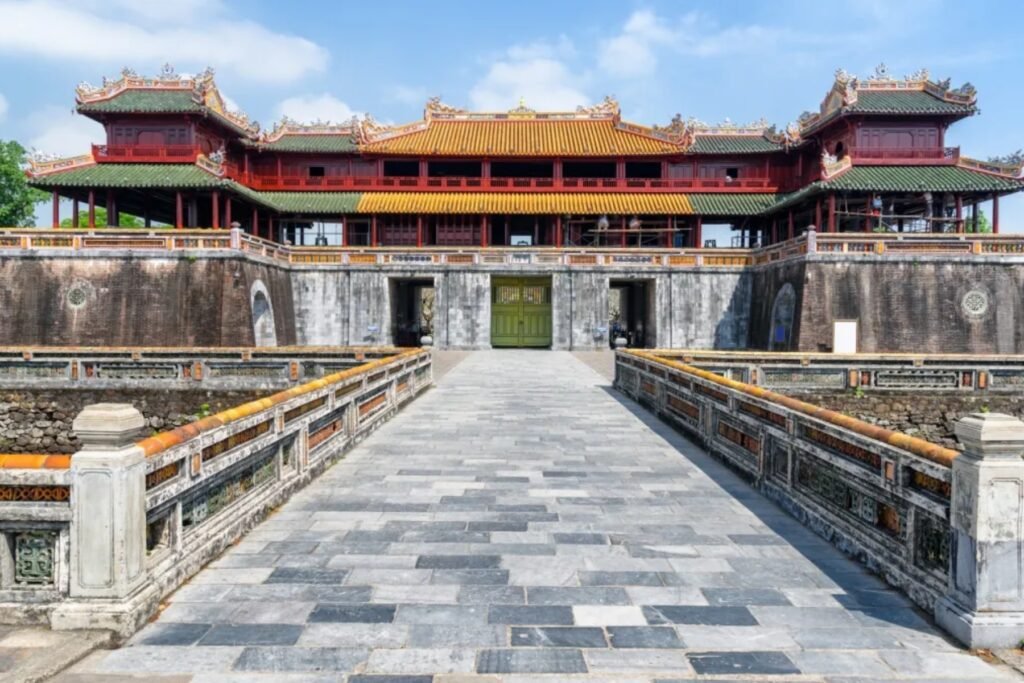

The surrounding moat, filled with water from the nearby Hue Perfume River, served as the first line of defense, making it difficult for enemy forces to approach the walls directly. Behind the moat, the thick Hue fortifications provided a stronghold for imperial troops to monitor and repel attackers.
The Ngo Mon Gate, the main entrance to the imperial citadel, was particularly important during times of conflict. It acted as both a ceremonial entrance for royal events and a heavily fortified structure in times of war.
Despite enduring numerous conflicts, including the Vietnam War, large portions of the ancient Hue city walls have survived and continue to stand as a testament to the city’s resilience and historical importance.
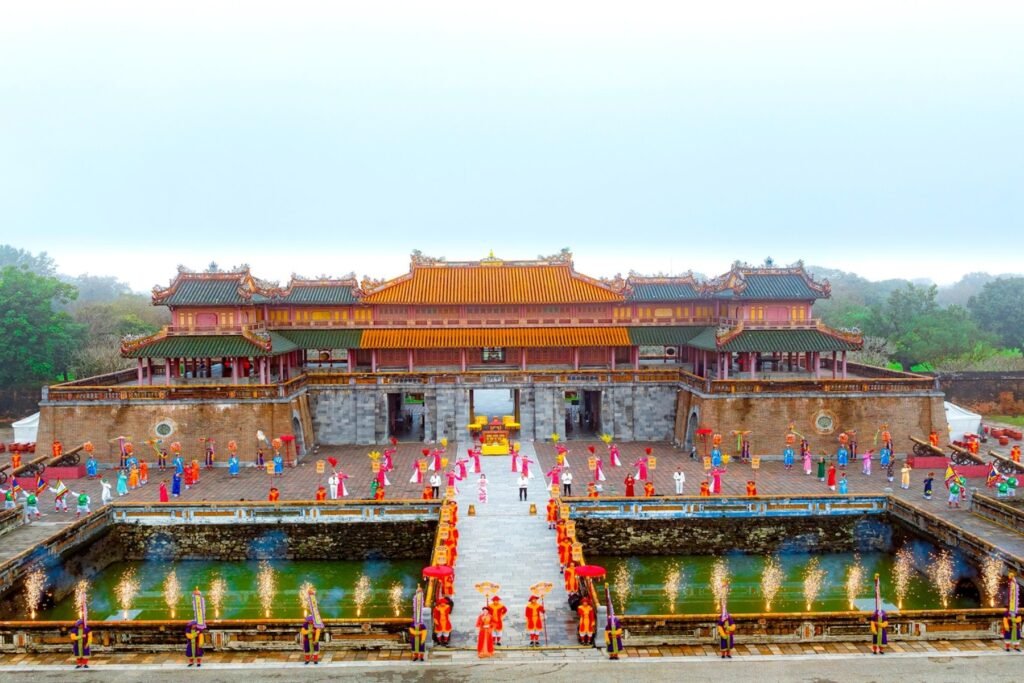

🌟Explore: Hue Ao Dai: Where to Rent and Get a Custom-Made One
3. Key Features of Hue Fortifications
The Hue city walls are renowned for their impressive design and meticulous layout, which blend defense with aesthetics. They were carefully constructed to serve both as a military stronghold and a symbol of imperial power. Below are some key features that make these Hue fortifications unique:
3.1. Ngo Mon Gate
As the main entrance to the Hue Imperial Citadel, Ngo Mon Gate stands as a grand and iconic structure of ancient Hue. This majestic gate, built in a multi-tiered pavilion style, was used exclusively by the emperor for ceremonial events. It provides a stunning view of the surrounding citadel and remains a favorite spot for visitors to capture memorable photos.
3.2. The Moat and Surrounding Ramparts
The moat encircling the Hue city walls played a vital role in the fortification system. Fed by the Perfume River, it served as a natural barrier, preventing enemy forces from easily accessing the walls. The surrounding ramparts, which were constructed with thick stone and bricks, not only provide a solid defensive foundation but also blend harmoniously with the lush landscape.
3.3. Existing Remnants and Preservation Status
Although parts of the ancient Hue city walls have suffered damage over time due to wars and natural erosion, significant efforts have nevertheless been made to restore and preserve this historical treasure. Moreover, ongoing restoration projects ensure that future generations can continue to appreciate its cultural and historical value. The walls and gates are currently maintained through a combination of local initiatives and international cooperation, ensuring that future generations can continue to explore and appreciate their cultural value.
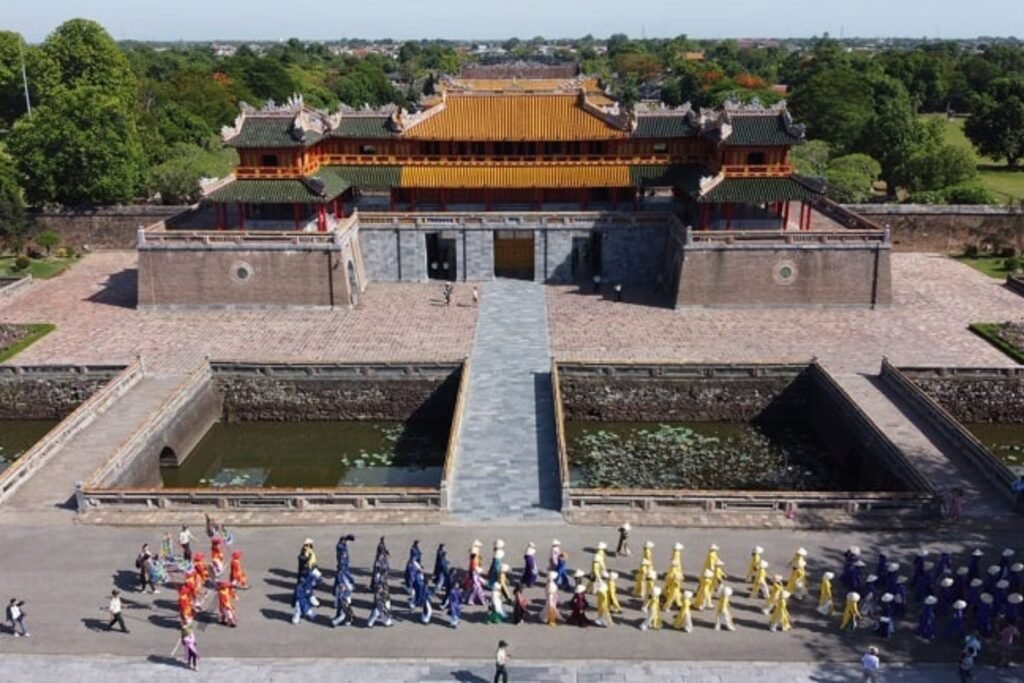

🌟 For more information Hue and the latest updates, contact us via WhatsApp or visit the Sun Getaways Travel Fanpage, Tik Tok Or follow these posts to get the details if you want to:
4. Visiting Hue City Walls
Exploring the Hue city walls is a must for any visitor eager to discover the rich history and culture of ancient Hue. Walking along the walls offers a unique perspective of the Imperial City, with panoramic views of the surrounding landscape and historical sites. Here’s how you can make the most of your visit:
4.1. Must-See Landmarks
- 💫 Ngo Mon Gate: The iconic main entrance, perfect for learning about the royal court’s history.
- 💫 The Flag Tower: Standing tall near the walls, this structure offers great photo opportunities and insight into the city’s military past.
- 💫 Nine Holy Cannons: These beautifully crafted cannons symbolize the power and protection of the Nguyen dynasty.
4.2. Cultural and Historical Experiences
As you explore the Hue fortifications, take time to observe the ancient architecture and imagine life within the imperial city centuries ago. Many areas around the walls host cultural performances, art exhibitions, and traditional music shows, allowing visitors to fully immerse themselves in the local heritage.
For a deeper understanding of the city’s history, take a guided tour. Independent travelers can access information boards and audio guides at key points.


✨ Explore: Exploring Hue Royal Tombs: A Glimpse into Dynastic Vietnam
5. Conclusion
The Hue city walls are a symbol of history and culture, preserving the legacy of ancient Hue. Their unique architecture and strategic importance make them a must-visit for anyone exploring the imperial city.
Join Sun Getaways Travel to experience the beauty and history of the Hue fortifications firsthand. Discover the stories behind the walls and create unforgettable memories on your journey!
Ask a question
Leave a Comment (0)
No questions yet. Be the first to ask a question!





